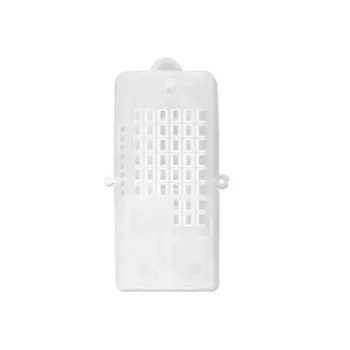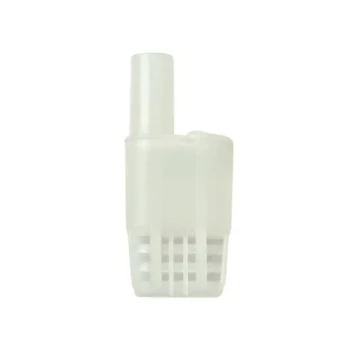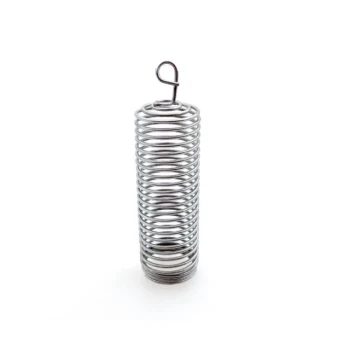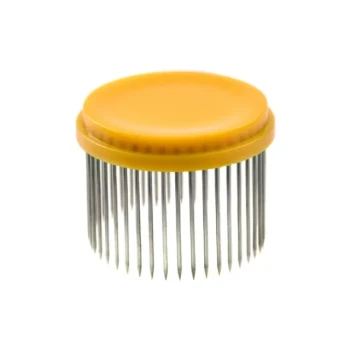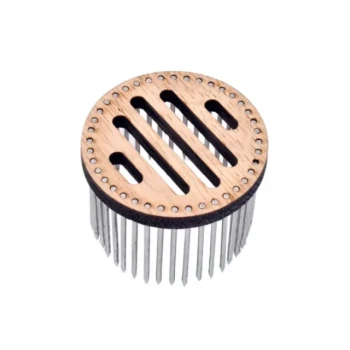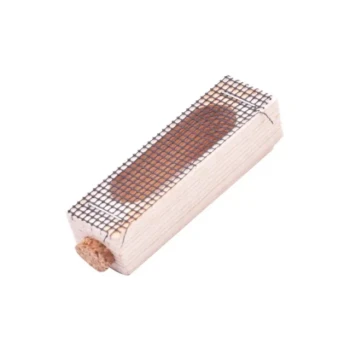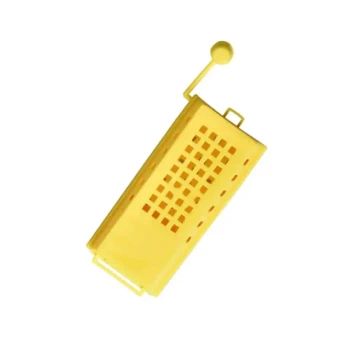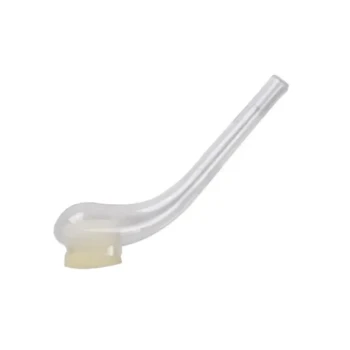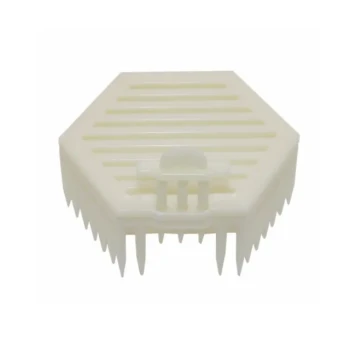Under ideal conditions, a honeybee queen can live for several years, but her productive and practical lifespan is often much shorter. While queens have been recorded living up to five years, most beekeepers find that a queen's peak performance lasts for one to three years, after which her egg-laying capacity begins to decline.
The queen's value is not measured by her age, but by her fecundity—her ability to lay a consistent and healthy pattern of eggs. A decline in this productivity is the primary signal for her replacement, whether initiated by the bees or the beekeeper.
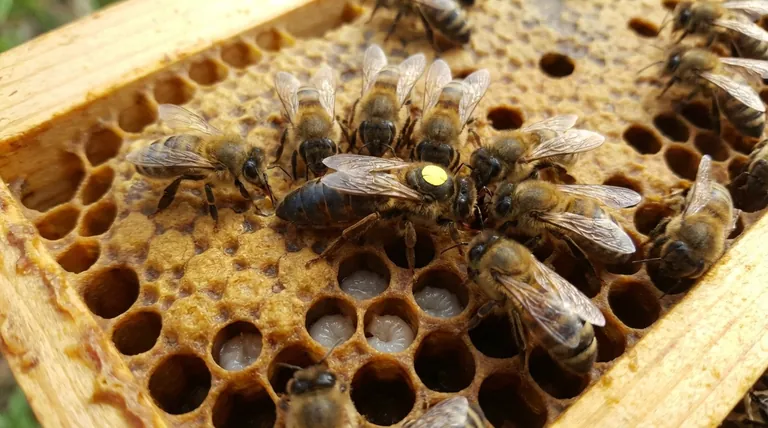
The Factors That Define a Queen's Lifespan
A queen's life is a race against her own biological limits. Her longevity is directly tied to her performance in two key areas: laying eggs and producing the pheromones that hold the colony together.
The Mating Flight: A Finite Resource
A queen bee embarks on mating flights only once, near the beginning of her life. She stores a lifetime supply of sperm from multiple drones in a specialized organ called the spermatheca.
Once this finite supply of sperm runs out, or its viability decreases, she can no longer lay fertilized eggs, which develop into female worker bees. She will begin to lay only unfertilized eggs, which become male drones, a condition that spells doom for the colony.
Peak Productivity: The Egg-Laying Engine
At her peak, a healthy queen can lay over 2,000 eggs per day, a mass greater than her own body weight. This intense metabolic output cannot be sustained indefinitely.
Typically, a queen's most productive period is in her first and second years. After this, her laying rate and the quality of her brood pattern—the tight, contiguous arrangement of eggs and larvae—often begin to diminish.
The Chemical Signal of Health
The queen produces a suite of chemical signals, most notably the Queen Mandibular Pheromone (QMP). This pheromone communicates her presence and health to the entire hive, suppressing the ovarian development of worker bees and maintaining social order.
As a queen ages, her pheromone output weakens. A drop in this signal is a clear indicator to the worker bees that she is beginning to fail.
Why Queens Are Replaced
A queen's tenure ends in one of two ways: she is replaced by the colony's own initiative, or she is proactively replaced by a beekeeper.
Natural Supersedure: The Colony's Decision
Worker bees constantly monitor their queen's performance. If they detect a drop in egg-laying, a spotty brood pattern, or a weak pheromone signal, they will begin the process of supersedure.
The workers will select several young larvae and feed them a special diet of royal jelly to raise new "supersedure cells." The first new queen to emerge will hunt down and kill her rivals and will eventually replace the failing mother queen.
Beekeeper Intervention: Proactive Requeening
Most beekeepers do not wait for a colony to fail. They proactively replace the queen, a practice known as requeening, typically every one to two years.
This ensures the colony is always headed by a young, vigorous queen at her productive peak. It is a fundamental management practice for maximizing honey production and maintaining a strong, healthy workforce for pollination.
Understanding the Trade-offs of Requeening
Proactively replacing a queen may seem harsh, but it is a strategic decision based on mitigating risk and optimizing colony health.
Productivity vs. Longevity
A beekeeper's goals are often different from the colony's natural cycle. While a colony might tolerate a slowly declining queen for a time, a beekeeper focused on honey production cannot afford the dip in population that results from it.
Replacing a queen after her first or second year ensures the colony's worker population remains consistently high during the critical nectar flow season.
The Risk of a Sudden Failure
Allowing a queen to age naturally increases the risk of a sudden, catastrophic failure. If she dies unexpectedly or becomes a "drone layer," the colony may not have eggs of the right age to raise a replacement, leading to its eventual collapse.
Proactive requeening is a form of insurance against this outcome.
The Purpose of Queen Marking
Beekeepers use a standardized international color code to mark the queen based on the year she was born. This allows for instant identification of her age.
The code rotates through five colors: White (years ending in 1 or 6), Yellow (2 or 7), Red (3 or 8), Green (4 or 9), and Blue (5 or 0). This simple system is crucial for making informed management decisions about when to requeen.
Making the Right Choice for Your Goal
The decision of when, or if, to replace your queen depends entirely on your beekeeping philosophy and objectives.
- If your primary focus is maximum honey production: Requeen your hives annually or every other year to maintain peak population and productivity.
- If your primary focus is colony resilience and genetics: You might allow natural supersedure, letting the bees select for queens best adapted to your local environment.
- If you are a new beekeeper: A safe and standard practice is to replace your queen after her second season to prevent the common problems associated with a failing queen.
Ultimately, observing your queen's performance is more important than following a rigid timeline.
Summary Table:
| Factor | Impact on Queen Lifespan | Key Takeaway |
|---|---|---|
| Spermatheca Health | Determines ability to lay fertilized (worker) eggs. | Finite sperm supply; depletion leads to drone-laying. |
| Egg-Laying Rate | Intense metabolic output; peak in years 1-2. | Proactive replacement maintains peak productivity. |
| Pheromone Output | Weakens with age, signaling decline to workers. | A key indicator for natural supersedure or requeening. |
| Beekeeper Goal | Drives decision to requeen (annually vs. biennially). | Aligns management with objectives like honey production. |
Ensure Your Apiary is Led by Peak-Performing Queens
A strong, productive colony starts with reliable, high-quality beekeeping equipment and supplies. HONESTBEE is your trusted wholesale partner, supplying commercial apiaries and beekeeping equipment distributors with everything needed to support successful requeening and hive management.
From marking kits for tracking queen age to essential tools for hive maintenance, we provide the durable equipment that beekeeping professionals depend on.
Ready to strengthen your operations? Contact our team today to discuss your wholesale needs and how our supplies can help you maintain thriving, productive colonies.
Visual Guide

Related Products
- Professional Multi-Functional Queen Bee Cage
- Wood and Mesh Push-In Queen Cage
- Multi-Function Queen Roller Cage and Catcher
- Durable Galvanized Steel Spring Queen Bee Cage
- Professional Round Push-In Queen Cage with Metal Tines
People Also Ask
- What should be done if bees damage the queen cage or harm the queen? Rescue Your Queen and Save Your Hive
- What are the components of a standard queen cage? A Guide to Safe Queen Introduction
- What is sequestration, and how does it help bees reorient? A Safer Guide to Hive Relocation
- Why might bees reject a new queen? A Guide to Successful Queen Introduction
- What are common mistakes to avoid when using queen cages? Ensure Successful Queen Introduction
